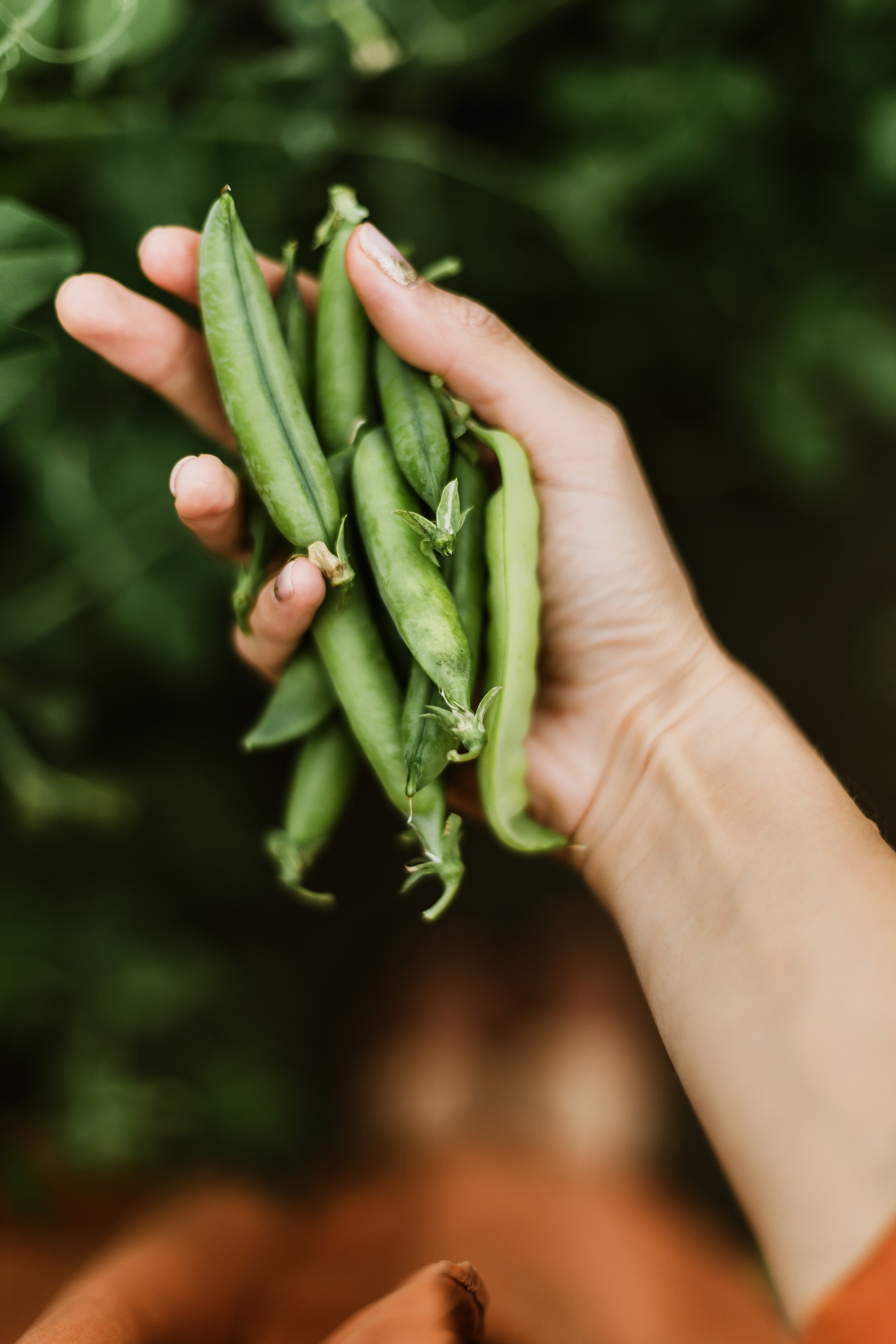Sweet Snap of Peas
How To Grow Peas For the Peas-Lover
1. Plant at the right time.
Know your plant hardiness zone and the days to maturation of your pea variety. You can find your hardiness zone here https://planthardiness.ars.usda.gov/PHZMWeb/ and you can typically find the days to maturation on the back of your seed packet or in the seed catalog you purchased the seed from. Here in Oregon, I am in Zone 7 and can plant from Feb to April and harvest from May to July. Peas like to grow in cool weather, so make sure they will be able to finish before heat comes on. They will germinate between 40-75 degrees. Plant as soon as you can work the soil in spring- even several weeks before the last frost.
2. Choose a couple great varieties.
Read the seed packet to learn the number of days to maturity and other features of the variety of peas. Even better, learn where your pea seeds are coming from and try to choose a variety cultivated for your local area. Grow more than one variety to ensure a good harvest.
3. Know the difference between snow peas and snap peas.
Snow peas are good for stir fry’s and chopped in fresh salads. They are flatter, not so sweet and have a definitive string. Snap peas are fatter, sweeter and yummy to eat fresh and whole.
4. Plant Successively.
Choose two varieties that have differing days to maturity by a week or more and plant at the same time. Or choose varieties with similar days to maturity and plant them two weeks apart. This ensures that you have peas maturing throughout the whole season.
5. Protect from Predators and Rot.
I sprout my seeds before I put them in the ground. This increases the likelihood that they will sprout and grow before animals get to them or they begin to rot in the moist soil. I place my seeds in a small mason jar and cover them with water to soak overnight. Then I drain them and rinse them 2x day until they are sprouting. Once they are sprouting, I put them in the ground right away, being careful not to damage the tiny sprout. You may also choose to cover with row covers until they are established.
6. Give them some support, but not much nutritionally.
I find peas prefer a woven string trellis or wooden trellis over wire, but chicken wire or other fencing will do. They like to stay cool and have something to grip with their tiny tendrils, so wire is acceptable when they will finish before high temperatures come on. Bush varieties can be planted 1-2 inches apart in large blocks so they can support each other. Peas don’t require much fertilizer. In fact, well rotted manure can be too nitrogen rich for them. A little fish emulsion at blossom time does them well.
7. Protect their shallow roots.
Mulching is important with peas for two reasons. First mulch helps to keep weeds at bay and with their shallow roots, peas are commonly pulled up along with the weeds. Second, mulch keeps their feet nice and cool during warmer weather.
I hope you get to enjoy the sweet snap of a fresh pea harvest this spring!
Photo by Daiga Ellaby on Unsplash

